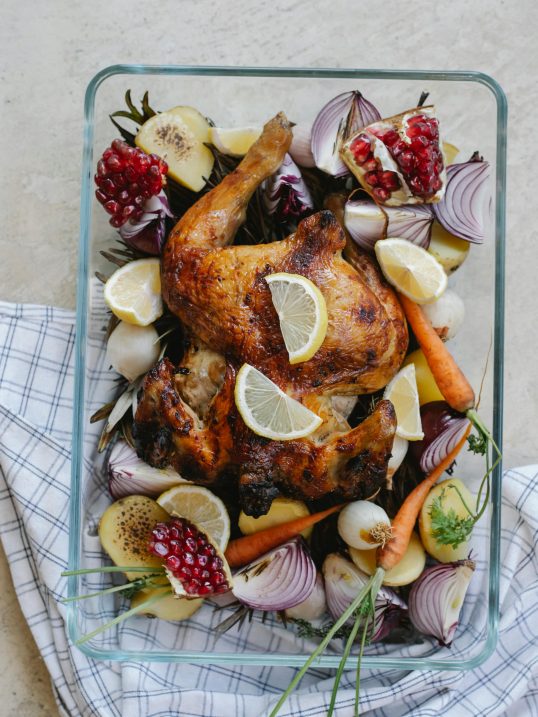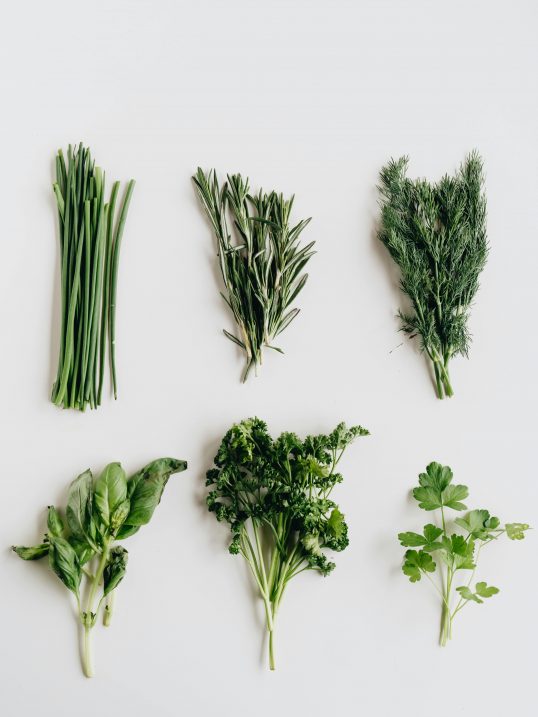Part of becoming a good cook means understanding different cuts of meat and how to cook them.
If you’re ready to understand the difference between ribs and riblets, you’re in the right place.
At Insider’s, we believe it’s never too late to pick up a new culinary skill or learn something new.
So, if you have made up your mind to tackle the ribs “conundrum”, we’re here to help you cook with confidence.
In this blog, we will explore the differences between ribs and riblets (for starters; more topics to follow soon), look at popular dishes that you can prepare using both, and share helpful tips on choosing a good cut for the tastiest results.
What are Ribs?
Ribs refer to the portion of an animal that includes the rib cage and the surrounding fat and meat.
Rib cuts are usually taken from pork, beef, and lamb; however, pork and beef ribs are more popular.
Rib cuts vary in size, meat-to-bone ratio, and preparation time and method depending on the type of meat and the section of the ribs they are cut from. Let’s take two popular rib cuts for pork and beef for comparison.
A full rack of pork spare ribs weighs between 3-4 pounds and contains 10-13 ribs, with each rib being 3-6 inches long; whereas, in the case of beef, an individual rib could weigh up to a pound and will be between 8-12 inches long.
Compared to steak (even bone-in types), ribs generally have more bone and less meat. However, when cooked properly, the marbled fat present in the raw meat renders and produces a tender and delicious fall-off-the-bone type of meat.
In terms of flavor profile, beef ribs carry a distinctive umami-like taste that only needs to be enhanced with salt and pepper. On the other hand, pork ribs are more versatile and can be flavored with different types of seasonings and sauces.
Beef and pork rib cuts are generally barbecued, smoked, or slow-roasted for several hours in an oven, although smaller cuts only need a quick braise or grill.
Short ribs and back ribs are popular types of beef ribs. In the case of pork, spare ribs, baby back ribs, and St. Louis ribs are the most sought-after.

What are Riblets?
While ribs can easily pass off as a main course, riblets are more suitable as appetizers. Riblets are small pieces of ribs you get when you cut a whole rack of pork ribs lengthwise.
This should not be confused with rib tips which are the chewy ends usually trimmed from a pork spare rib. Rib tips mostly contain cartilage with small bones.
On the other hand, riblets taste the same as ribs, with a mild flavor that can be spruced up with dry rubs and seasonings. Similar to ribs, riblets need to be cooked low and slow (at a low temperature for a long time) for the most flavorful results.
Read more: How to Reheat Ribs
Key Differences between Ribs and Riblets
Let’s dig in a little deeper to understand the differences between ribs and riblets.
Anatomy and cut
There are several types of pork rib cuts available in the market. These include baby back ribs, spare ribs, St. Louis ribs, and Kansas City ribs.
Baby back ribs are cut from under the loin area and include the upper portion of ribs that connect to the spine of a pig. Spare rib cuts are made lower down the rib cage reaching the fatty portions of a pig’s belly and going as far as the breastbone. Baby back ribs are cut first from a pig’s rib cage, followed by spare ribs.
St. Louis ribs are a more presentable version of spare ribs prepared by removing the breastbone along the top of the spare rib cut and the rib tips at the end of the cut, resulting in a rectangular-looking rib cut that cooks uniformly.
Kansas City rib cuts are similar to St. Louis ribs, except they carry the rib tips.
Riblets are usually cut either from a whole rack of spare ribs or baby back ribs. If you purchase meat from a local butcher, you could request them to cut the ribs into bite-sized riblets.
The same cannot be said for your local supermarket or grocery store, however.

Size and Shape
As the name suggests, baby back ribs are smaller than other pork ribs, measuring between 3-6 inches in length and weighing between 1.5-2 pounds per rack.
A full rack will contain 10-12 ribs; anything lesser is usually referred to as a ‘cheater rack’. Baby back ribs have a distinct curve where the ribs meet the spine, which is a defining feature of this rib cut.
Spare ribs are longer and flatter than baby back ribs and a full rack of these ribs weighs between 3-4 pounds, which is almost twice that of baby back ribs. You will find between 10-13 ribs on a full-rack spare rib cut.
St. Louis and Kansas City rib cuts are processed from spare ribs and are more or less uniform in shape. A St. Louis cut comes in a neat, rectangular shape and is the choice cut to serve in restaurants and barbecue competitions. You’ll find rib tips only on Kansas City ribs.
Since they are ribs cut in half, riblets are the smallest among pork ribs and are served as individual pieces rather than a rack.
Meat to bone ratio
Let’s start with baby back ribs. These ribs contain meat and bones in a 1:1 ratio, which means half the weight of a rack comes from its bones. After cooking, a rack of baby back ribs weighs around 1 pound, which is sufficient to feed 1-2 people.
Spare ribs weigh more than baby back ribs, given the larger size of the rack. Although they have a lower meat-to-bone ratio, a typical spare rib rack has more meat than a rack of baby back ribs.
Since they are cut from a pig after removing its belly, spare ribs also have more marbled fat on the top and between the ribs. This is a significant difference when compared to the leaner baby back ribs. Although spare ribs take longer to cook, they produce a tasty main course that can easily feed 3-4 people.
Although a St. Louis cut has a higher meat-to-bone ratio due to the removal of the breastbone from a spare rib rack, it has pretty much the same quantity of meat as a spare rib cut. It is uncommon to find St. Louis cuts in supermarkets, so your best bet to purchase this cut is from a local butcher.
Alternatively, purchase pork spare ribs and trim down the rib tips yourself. That way, you can make a quick snack out of the gristly rib tips while you wait for the spare ribs to cook.
Riblets have a similar meat-to-bone ratio to the rack they are taken from, although they look smaller and stubbier.
Flavor profile
Pork tends to lean to the sweeter side and depends on a generous amount of dry rubs, seasonings, and sauces to amp up its flavor. That said, the type of rib cut also has a great impact on its taste.
The meat on baby back ribs is lean and tender, whereas the meat on spare ribs, St. Louis cuts, and Kansas City cuts are fattier. Remember that spare ribs are cut closer to the pig’s belly, which gives us bacon.
When purchasing a rack of spare ribs, you should be able to see fat marbled through the meaty portion. This fat renders during the low and slow cooking process and imparts a rich flavor to the meat.
What about riblets, then? Riblets from a rack of baby back ribs are leaner and more tender than those from a spare rack. Moreover, baby back riblets are also meatier than their spare rack counterparts.
When it comes to taste, rib enthusiasts are divided. So, if this is your first time cooking ribs, we suggest you start with a baby back, which takes less time to cook. Try out different styles of rib cuts to develop your personal preference.
Choosing Between Ribs and Riblets
Choosing between different types of ribs and riblets is easy if you keep a few things in mind.
- Due to a surge in demand for this leaner protein, baby back ribs are pricier than spare ribs; so if you plan to feed a crowd, it is better to go with spare ribs.
- A rack of baby back ribs will be generally sufficient for two people. On the other hand, larger spare rib racks will serve 3-4 people.
- Baby back ribs take around 3-4 hours to cook, whereas spare ribs need 5-6 hours to cook properly, due to their size and fat content.
- Riblets are best served as finger food; kids will find riblets much easier to handle than ribs. For gatherings, however, you should count on having more side dishes to feed everyone.
- Ribs must be smoked, grilled, barbecued, or baked in an oven for the most tender and delicious results. On the other hand, baby back riblets can be air-fried or oven-baked for a quick and delicious appetizer.
- The chewy texture of rib tips might not be for everyone. That’s not to say they aren’t delicious. If you plan on serving a side dish of rib tips, make sure you purchase spare ribs. You could ask your local butcher to trim and save the rib tips or you could do this yourself at home.
- When selecting a pork rib cut, always look for pieces with a deep reddish or reddish-purplish hue and a decent amount of fat marbling through the meat.
- Avoid ribs where the meat is cut so close to the bone that you can see the ribs; such a cut is called a shiner. This leaves very little meat on the bones, which tends to fall off during cooking. You also do not want a thick layer of fat on top; good pork cuts always have most of the additional fat layer removed.
Culinary Uses of Ribs and Riblets
Both ribs and riblets can be prepared in a variety of ways.
For seasoning, some prefer a dry rub with salt and pepper, whereas, some marinate the ribs for a couple of hours with a marinade or coat a generous amount of store-bought or homemade sauces.
Cooking methods for ribs
While the most popular methods to prepare pork ribs are smoking and barbecuing, you can also grill or bake them. The key to tender and flavorful ribs is to cook them over low, consistent heat for several hours.
To prepare ribs, coat a light layer of olive oil on the ribs before sprinkling the seasonings for better adhesion. Allow the seasoned meat to rest in the refrigerator overnight or at least for a couple of hours.
A basic dry rub contains just salt and pepper, although you could create a custom spice mix using paprika, garlic powder, onion powder, chili, ground cumin, or mustard.
If you would rather use a marinade, make sure to apply it all over the ribs, and tightly wrap the meat before placing it in a fridge. A good marinade will have a mixture of apple cider vinegar or some type of acid, olive oil or any other fat, and seasonings of your choice. The acid in a marinade tenderizes the meat, which is especially important if you plan to shorten the cooking time for ribs.
To smoke ribs, you need to use cherry wood, applewood, or wood from pecan or hickory for the best smoky flavor. If you don’t have a smoker, you could try infusing a smoky flavor by adding ingredients, such as smoked paprika, or a few drops of liquid smoke to your marinade.

✅ Subtle Sweet flavor
✅ Chunk size pieces
✅ Four pound bag
Popular dishes featuring ribs
While smoking or barbecuing gives an incredible flavor, these techniques are best saved for weekends or family get-togethers. For everyday recipes, we recommend trying oven-baked pork ribs with barbecue sauce, Chinese-style soy sauce-braised ribs, and slow-cooker ribs with Worcestershire sauce, garlic, and cayenne pepper.
Several Asian recipes call for a rib rack to be cut up into individual pieces before they are marinated for a couple of hours and grilled or pan-roasted. Once cooked, they can also be tossed in a stir-fry dish.
Cooking methods for riblets
Due to their smaller size, you can cook riblets in many ways, including grilling, baking, frying, and of course, smoking.
When compared to ribs, riblets take less time to cook. As with ribs, you can apply a marinade on the riblets and let them sit in the refrigerator for a couple of hours or dry rub them with your favorite spices just before cooking.
Popular dishes featuring riblets
Probably the most popular dish featuring riblets is the Applebee’s riblets. To prepare this, you need to grill the riblets on medium heat, followed by steaming them in an oven for a couple of hours.
Steaming loosely-covered riblets on a broiler rack over a pan of water and liquid smoke makes the meat tender and completes the cooking. The final step is to brush the riblets with barbecue sauce and your homemade Applebee’s riblets are done!
Insider’s Insight
There are several types of pork rib cuts you could try out, the most popular ones being baby back ribs, spare ribs, and St. Louis ribs.
Baby back ribs are generally smaller in size and leaner, with a higher meat-to-bone ratio, and take less cooking time. Spare ribs are larger and fattier and feed more people, even though they take much longer to cook. St. Louis ribs are trimmed spare ribs that cook uniformly and are more presentable.
Riblets are ribs cut into half lengthwise and differ from cartilage-rich rib tips at the end of a spare rack. Any rib rack can be cut up into riblets. Due to their size, riblets take less time to cook and make for satiating finger food, especially for kids.
To get the tastiest ribs and riblets, it is essential to apply a dry rub or a marinade a few hours before cooking. You can smoke, barbecue, grill, broil, or bake them. In addition, riblets can also be fried. For tender meat that easily comes off the bone, it is important to cook ribs low and slow.
For a first attempt at cooking ribs, we recommend trying oven-baked baby back ribs with barbecue sauce. Happy cooking!






